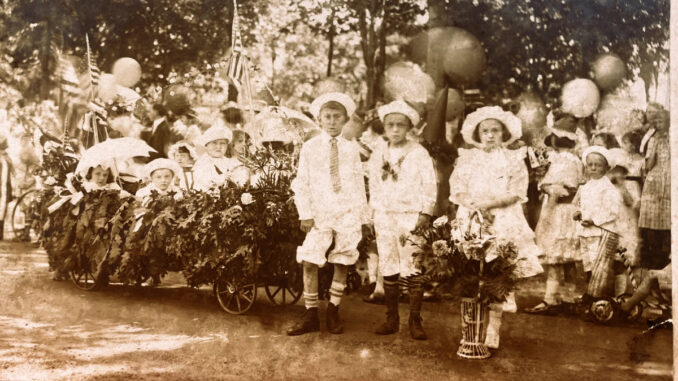
PARK RIDGE—The Pascack Historical Society’s member publication, “Relics,” has been published continuously since 1955. The early editions are a treasure trove of memories offered by writers who had spent their childhoods in the Pascack Valley during the late 1800s.
The editor and primary author in those days was Mr. John C. Storms, who was born in Park Ridge in 1869. In the summer of 1957 he wrote an article about the Fourth of July as it was in the old days.
“Fourth of July is entirely different from what it was in recollection of those who were youngsters 75 years ago,” he wrote, referring to those of his generation. “Even that differs from the time when there was a military display, drilling, firing of a cannon (and blacksmith anvils), and gatherings to hear the Declaration of Independence read.”
According to Storms, Independence Day was eagerly awaited by the children of the late 19th century. For the little ones, school had closed just a few days earlier, at the end of June. For the older boys and girls, it had closed at the end of May. That was strawberry picking season, and they were needed for work on the farm.
“Pennies were scarce among the youngsters and had been religiously saved for buying the fireworks without which it would be impossible to properly celebrate Independence Day,” Storms wrote.
One of those children, who was a senior citizen in 1957, recalled the year he had managed to earn and save 14 cents for the big event. He invested all of it in fireworks and was the envy of the other boys.
Firecrackers cost 5 cents a pack, paper caps for toy pistols were 5 cents a box, and torpedoes were a cent for a small round package, Storms recalled.
“Torpedoes consisted of small stones with a paper cap in the package, and when thrown violently on a hard surface these gave a very satisfactory report,” he wrote. “These latter articles were left for those children who were nervous or afraid of real fire.”
Sticks of Chinese incense, commonly called “punk,” were kept burning constantly for the lighting of firecracker fuses. The job of waving the incense to keep the ember burning would be delegated to a smaller brother or sister.
For the adult men, their part in the patriotic display typically entailed firing off a heavily loaded old musket just at daybreak.
“There were plenty of burned fingers before the day ended and wise mothers were careful to have a supply of soft old linen and sweet oil on hand for the occasion,” Storms wrote.
Amid all these explosions, serious injuries happened from time to time. Poor little Luther Haggerty, the 10-year-old son of Rev. Theodore Haggerty of the Hillsdale Methodist Church, received severe burns during the firing of a cannon on the Fourth of July in 1894. A week later, young Luther was on the road to recovery. Since he had missed out on the July Fourth festivities, he decided to shoot off some fireworks he had left over. While lighting them, again there was an ill-timed explosion. Luther was struck in one eye and blinded.
As the region’s population grew in the 20th century and houses were built closer together, municipally operated fireworks displays in the evening ended the earlier displays of patriotism—and seriously cut back on the number of injuries.
